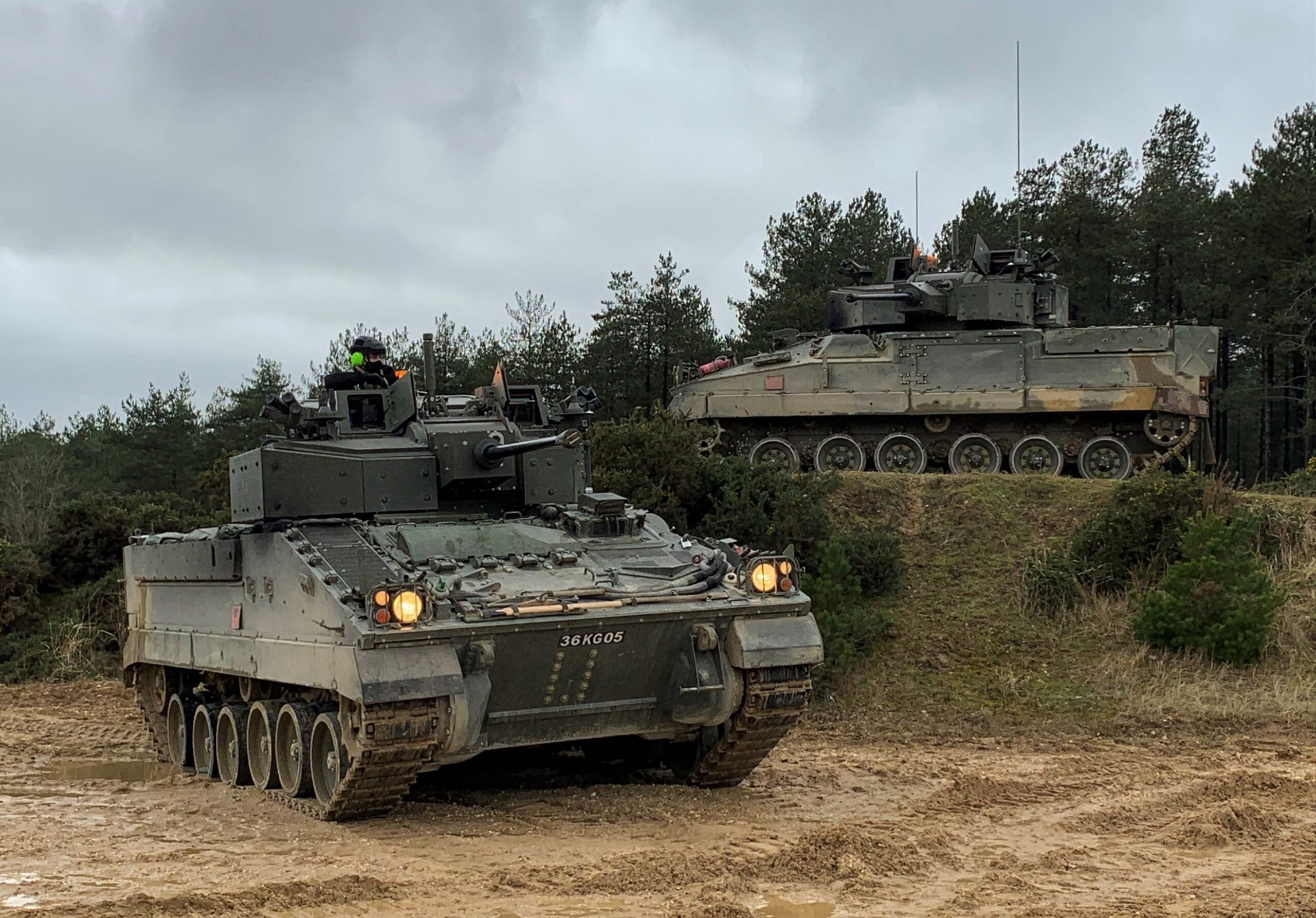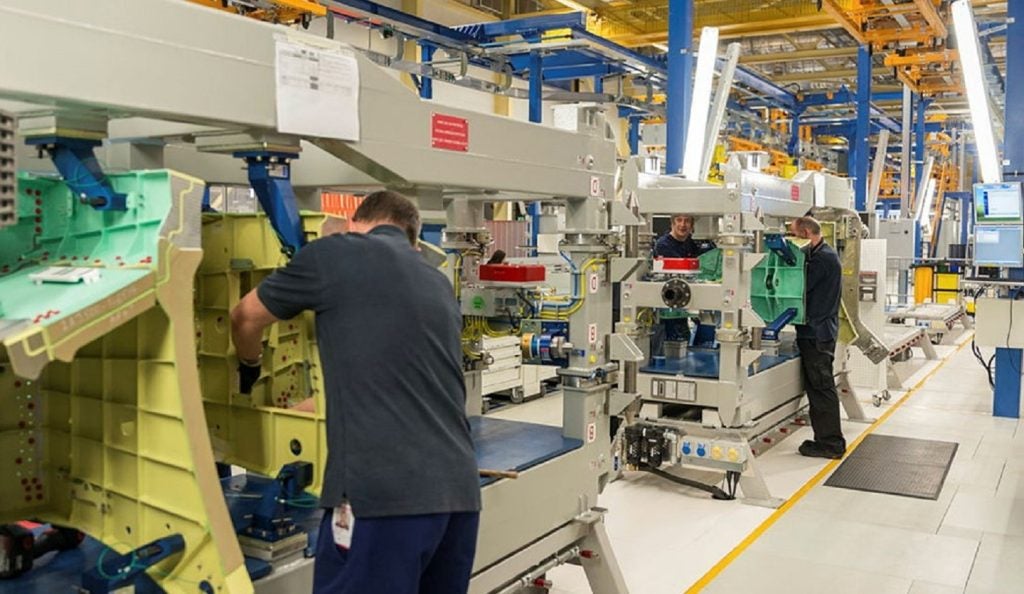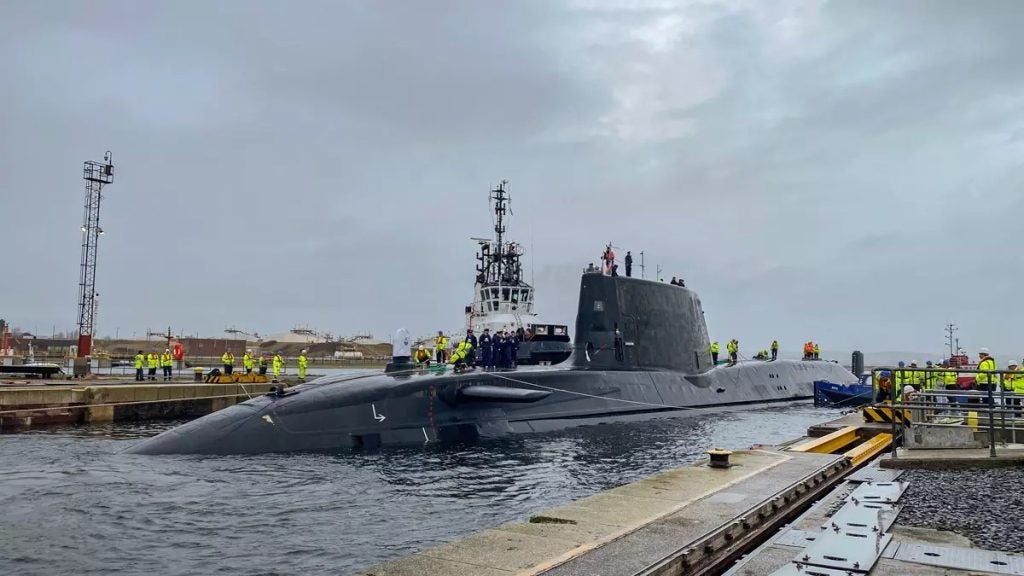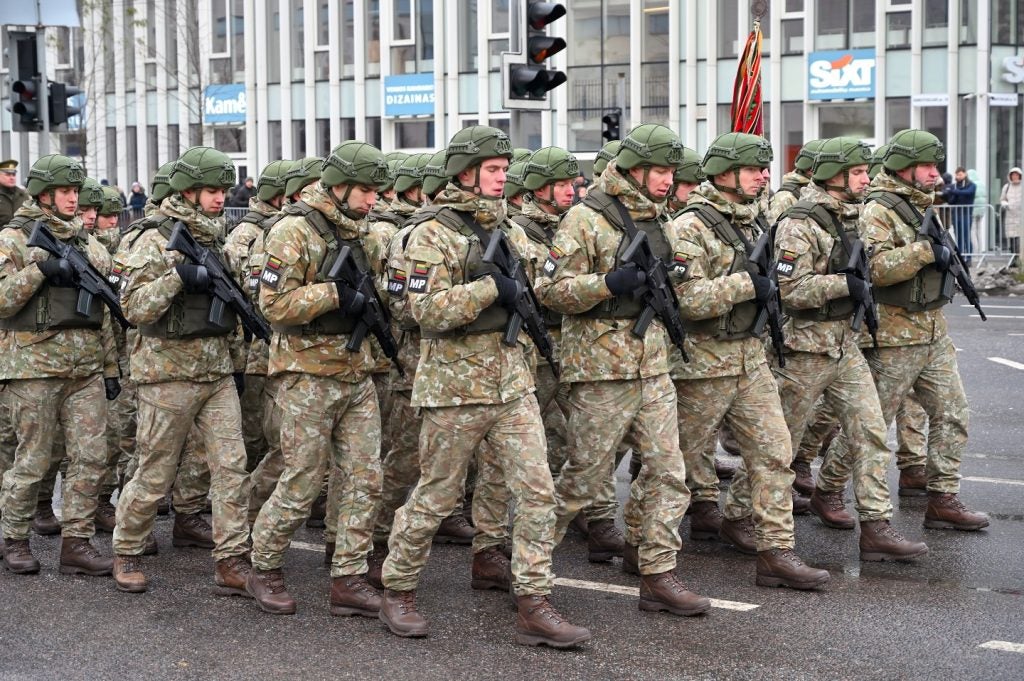
Plans to trim or cut the Warrior fleet have been rumoured for months, but despite this, Lockheed Martin has pushed forward with Warrior CSP’s reliability growth trials, recently announcing that 80% of the trials – 95 battlefield missions – had been completed.
During a press briefing, Lockheed Martin’s Warrior CSP programme director Keren Wilkins told reporters that the company forecasts the vehicle ‘will definitely achieve the very stringent requirements that we [Lockheed Martin] have around reliability’.
The programme’s Qualification and Verification Trials for the programme are also ongoing concurrently.
Should the programme get the green light to go into production, following the publication of the Integrated Review in March, Lockheed Martin anticipates Design Acceptance and a subsequent contract award for manufacture could be wrapped up by the end of 2021.
Warrior CSP has been in trials since 2019 to demonstrate to the British Army that it meets its requirements. The Warrior vehicle hasn’t undergone a major upgrade since it entered service in 1984. A key selling point of the Warrior CSP system is its ability to fire on the move.
Wilkins said: “I think the most significant thing is that WCSP is the only capability that allows soldiers safely to enter and operate in the most demanding close combat and high threat environments.
How well do you really know your competitors?
Access the most comprehensive Company Profiles on the market, powered by GlobalData. Save hours of research. Gain competitive edge.

Thank you!
Your download email will arrive shortly
Not ready to buy yet? Download a free sample
We are confident about the unique quality of our Company Profiles. However, we want you to make the most beneficial decision for your business, so we offer a free sample that you can download by submitting the below form
By GlobalData“It also provides support to the Challenger main battle tanks, and infantry troops once they are actually deployed from the platform.”
Nixing the programme would be a blow to Lockheed Martin UK’s turret centre of excellence at Ampthill which also produces the turret for the UK’s AJAX reconnaissance vehicle and would cause the site to lose around a third of its projected workload.
Last year, a source told Army Technology that the vehicle is in the most doubt as the UK looks to reassess its forces. Cutting the capability would leave the UK without an Infantry Fighting Vehicle.
Cutting the programme could also set back years of work to rebuild the UK’s turret design capability – with the Lockheed Martin AJAX and Warrior CSP turrets being the first to be designed in the UK since Challenger 2 in the 1990s and the original Warrior IFV in the 1980s.
Last year, a report published by KPMG and commissioned by Lockheed Martin found that a production contract for the Warrior CSP could add up to £1bn to the UK economy. The programme would also support an estimated 2,000 jobs at its peak.
The figure was based on an expected production contract covering the upgrade of 275 vehicles between 2021 and 2029. At this time, any final vehicle numbers are yet to be confirmed as a production contract has yet to be signed.
Around 80% of the Warrior CSP solution is sourced from British Companies in its current state, this figure is expected to stay the same for the production version.
An executive summary of the KMPG report seen by Army Technology said that based on an expected contract award in the last quarter of 2021, resultant vehicle deliveries would likely take place between 2023 and 2028.
Commenting on the Integrated Review, Wilkins added: “From my perspective, we’ve certainly heard that no programme is absolutely safe in an integrated review, that’s just a fact of life, that’s why the government does that review. We do feel vulnerable, to be honest. Despite being the most mature from a design capability in demonstrating that we meet the requirements outlined from a reliability and design acceptance status.
“None of the other new platforms that are about to come into service are as mature as us. We don’t have a manufacturing contract yet. We are working very closely with DE&S [Defence Equipment and Support].
In the past, the MOD told Lockheed Martin it intends to up to 290 Warrior vehicles to the CSP standard. When asked this week, the MOD said it couldn’t comment on future programme decisions as a result of the ongoing Integrated Review.
Army Technology understands that the Full Business Case for the Warrior CSP programme is currently going through the MOD’s internal approval process, all decisions on future programmes are subject to the integrated review.
Wilkins added: “And we know that the army is absolutely committed to Warrior, so we are steaming ahead on the basis that we will get a contract award this year. I think we are vulnerable; I am concerned.
“We’ve talked to the army, they’ve told us that they’ve done a detailed analysis, and WCSP is the only capability that will meet all of their requirements to provide an armoured infantry fighting vehicle with the capacity of a full section in the back, with the main weapon – the 40mm turret – we’ve got the added armour protection, all of the great capability that we’re bringing into service.”
The Warrior CSP turret is built around the CTA International 40mm cannon that is also used on the 245 turrets Lockheed Martin is building for the General Dynamics-led AJAX programme.
Throughout the past decade, Lockheed Martin has made a significant investment into both the Warrior CSP programme and its turret centre of excellence at Ampthill rebuilding the UK’s turret design and manufacture capability.
Wilkins added: “It’s taken Ampthill ten years to reconstitute the skills and know-how to design and manufacture modern digital turret systems, we’ve made a significant investment as the Ampthill site in that capability. That’s for the future of this turret programmes.
“And as part of that, we’ve developed some significant facilities. We’ve got a manufacturing capability which is world-class, excuse me on Ampthill site. But also, we’ve brought together a real core of subject matter experts from various different backgrounds to come together to have what I’d call a one-stop-shop for turrets and we’re very proud of that.”
Warrior CSP is designed to extend the in-service life of the Warrior armoured fighting vehicle (AFV) beyond 2040. The programme is comprised of three parts; the Warrior Fightability Lethality Improvement Programme (WFLIP), Warrior Enhanced Electronic Architecture (WEEA), Warrior Modular Protection System (WMPS).

Image: Lockheed Martin.
Building on Warrior CSP – the ‘Unmanned Urbanfighter Turret
Furthering the Warrior CSP turret design, Lockheed Martin has developed the ‘Unmanned Urbanfighter Turret’ a concept turret derived from the system designed for the programme. Lockheed Martin believes this system could have strong export potential and strengthen its turret business access to the medium calibre turret market.
The new turret takes design features of the Warrior CSP turret, including its basis on the Generic Vehicle Architecture (GVA), and the potential of an uncrewed turret has already been demonstrated at the start of Warrior CSP’s design acceptance trials.
The concept turret also builds on the modular approach to make it more flexible in terms of what vehicles it could be mounted on, a move that Lockheed Martin believes strengthens its export potential.
The company told Army Technology that the potential export turret could support the same number of jobs as the Warrior CSP programme could if it goes into production.
Lockheed Martin also touted interoperability benefits of an export turret including the integration of Anti-Tank Guided Missiles (ATGM) launchers, launch and control of Uncrewed Air Vehicles (UAVs), Active Protection Systems, Counter UAS systems, and integration between ground vehicles and aerial vehicles such as attack helicopters.







